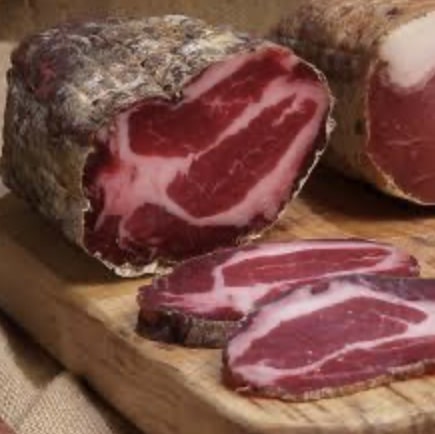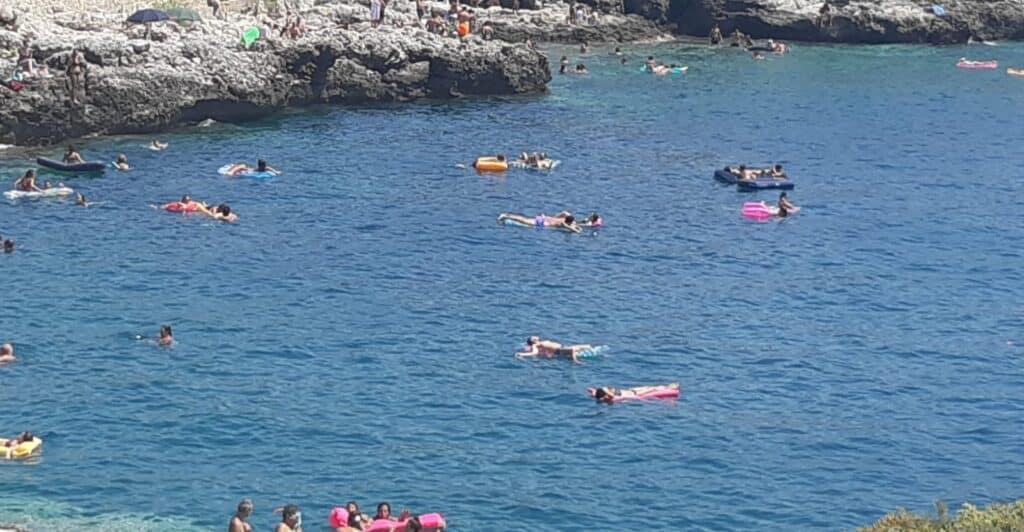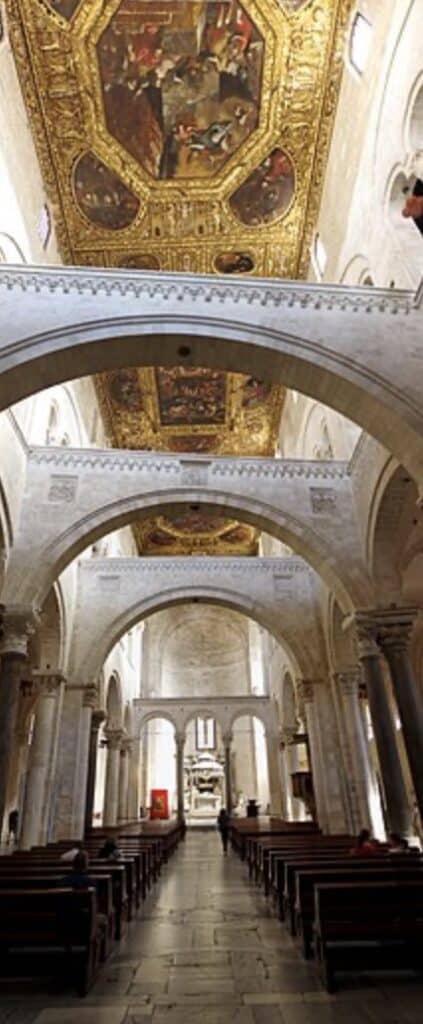Ciao Italianista contains affiliate links and is a member of the Amazon Services LLS Associates Program. If you make a purchase using one of these Amazon links, I may receive compensation at no extra charge to you. See my disclosure policy for more information.
Let’s go to Puglia
Let’s go to Puglia. Virtually. It’s August 2020 and we are in the middle of a pandemic. Americans can’t leave the country. My passport recently expired and there are 2 million people ahead of me in line. But let’s not let that stop us! We have the time right now to deepen our language skills and plan our trip.

Alberobello
Let’s stay in Alberobello as our home base in Puglia. From there we will explore the countryside. We flew into Rome and rented a car. It was a long drive, made even longer by all our stops along the way.
Finally, we arrived at our hotel in Alberobello. We are staying in a Trullo! They are very easy to book online either through Booking.com or Airbnb. Some are located in the historical part of town and are more simple and others are further out from town and are more luxurious with pools and spas.
About Alberobello
Say Alberobello and immediately you imagine the unique architecture of the white houses with grey stoned conical roofs against a brilliant blue sky. Immediately you desire to know more about i trulli.

I Trulli
A trullo is a cone-shaped roof made out of flat stones. These roofs go back to the 1400s when the inhabitants of the town developed them in order to avoid paying the roof tax. They are stones set in a circular pattern going up and inward and do not use any mortar. The idea was that if the inspector came, they could quickly and easily be knocked down and so the owners could avoid paying the roof tax. The type of stone is called calcare or limestone.
All the houses in the town are white. The houses in the Mediterranean are painted bright white to reflect away the sun and keep them cool. In the old days, there was a woman who’s job it was to whitewash all the homes. When a new home was being built, a big celebration happened after the last stone was placed and then the pinnacolo or pinacle was placed on top. The pinnacolo was the signature of the stonemason who made the trullo and each mason made a different symbol like a ball, disk, cone, bowl, or polyhedron out of sandstone. The pinnacolo is also a sign of protection or hope for the people who will live in the house.

Once the trullo is finished, the new inhabitants design and choose an emblem to paint on it. It might be a heart with an arrow through it for newlyweds. Later when the rain washes off the sign, the family chooses a new sign to paint on it. For example, maybe a crib to welcome a baby.
Alberobello was a town of hard-working agrarian people. They had a patriarchal organization. Cleanliness was very important. All the details are thought out like how to arrange the flowers for the most beautiful presentation. The land was tough and the men had to be very tenacious to squeeze from it olives and even grapes for wine. The women carried cisterns and walked to the water source in the center of the town near the church to collect water.
Nowadays, the town is still very clean but not as quiet. The old part of town still has the limestone paved streets and is still very peaceful because there are no cars there but during the day it is full of activity from the tourists. When you reach the town by car, you pay 4 Euros for the day to park in a big parking lot and then you walk into the town. Follow the streets that are going up the hills and there you will find tons of shops, cafes, and wine bars with amazing cheeses and meats including brasaolo (donkey).
For a glimpse of the past and the present, watch these two videos:
Things To Do Near Alberobello
There are so many excursions and things to do right from Alberobello. For example:
- Discovering the Itria Valley: walking and bike tours
- Photoshoots for your Instagram
- Cooking classes for tiramisu’, orecchiette, and other kinds of pasta
- Food, wine, and cheese tastings

Tour of Itria Valley
Alberobello, together with Locorotondo, Martina Franca and Cisternino, is located in the Itria Valley. Even though these towns are so close, they have a great variety of architecture and can all be reached easily on an electric bike. The name of Locorotondo comes from Latin (locus rotundus) and it literally means round place because all the houses on the outside of the old city are arranged in a round shape. The rooftops of Locorotondo are called cummerse. They consist of two steep slopes like the rooftops in Northern Europe. The roofs were built this way to facilitate rain collection which was collected in vast cisterns dug into the rocks. The town was built high on a hill in order to be able to see the Saracen pirates coming but since it is so far up, it doesn’t have any access to water reserves.
Martina Franca
Martina Franca is home to a lot of Baroque architecture. It used to be a fully walled town with four gates and many towers inside the gates. As it evolved into a more modern town, many of the towers were removed and roads punched through the walls but it still has its four Renaissance and Baroque gates. Points of interest include the 17th century Palazzo Ducale, the Piazza Plebiscito (the true heart of the town filled with cafes), and the Basilica di San Martino whose Baroque facade lights up in the setting sun. And don’t forget to try the capocollo, a nice fatty part of the pig where the neck and shoulder meet.

Let’s Hit the Beaches of Puglia!
Puglia, the heel of the boot, has been called the California of Italy for its amazing beaches. Whoever said that did not realize the beaches in Puglia are way better than California beaches because in Puglia the water is warm! The water is warm, clear, and calm. While in California there is usually surf, undertows and riptides, and the water is cold. A favorite pastime of the Italians is to float around lazily on materassini.

Ecco una foto che mostra le persone in una piccola baia in una località del Salento. Ce ne sono molte così in zona e in Italia. Si vede la gente che si rilassa sui materassini. E si lascia trasportare molto lentamente dal mare, prendeno il sole.
A Native of NardÒ
Here is a photo that shows the people in a small bay in an area of Salento. There are many just like this nearby and in Italy. You can see the people relaxing on the mattresses. They let themselves be transported very slowly in the sea, getting sun.
From Alberobello to the Beaches of Puglia
Alberobello is located inland right in the middle of Puglia, a long, slender region with vast stretches of sun-baked coastline on 3 sides. The closest beaches are near Polignano a Mare about 31 minutes by car. Along this stretch of the Adriatic coast, you can find many lidi or paid beaches with umbrellas, bathrooms, and restaurants or spiaggie which are public beaches. However, if you are willing to drive a little further, you can discover some true gems such as Porto Selvaggio, Le Maldive del Salento, e Porto Cesareo. These beaches are about 2 hours from Alberobello with much of the drive along the coast until you get to Brinidisi. Then you turn inland and drive across the peninsula. The long drive is worth it since you get to see so much of Puglia with the beautiful beaches, olive and wheat groves, nature preserves, family-run farms open for Agriturismo, large ports, and small fishing villages, castles, churches, and ancient ruins.
Video of Best Beaches in Puglia with #1 Porto Selvaggio
Bari – Resting Place of Santa Claus
I remember Bari as a port city where I embarked on a cruise ship to sail around the Mediterranean. It was during my first trip to Europe. The trip when I fell in love with Italy and Italian and became an Italianista. Now I have learned Bari is also the patron city of Saint Nicholas; in other words, of Santa Claus! And it is an easy excursion from Alberobello. In the oldest surviving building in Bari, the Basilica of San Nicola, you can visit the resting place of the saint who inspired the story of Santa Claus.
The Story of Saint Nicholas

The story of St. Nicholas is a wonderful story to tell children on the evening before December 6th. After telling the story you set out cookies and milk for St. Nicholas and carrots and hay for his donkey.
The story goes like this: Once there was a boy named Nicholas who lived in Turkey. Nicholas inherited lots of money. When he grew up, Nicholas learned of a poor man who wasn’t able to find suitors for his three daughters because he didn’t have money for a dowry. Nicholas traveled to the house on his donkey and tossed three sacks of gold down the chimney for each of the dowries. The gold happened to land in each of the girls’ stockings which were hanging by the fire to dry. The oranges we receive today in our Christmas stockings are a symbol of the gold that was left in the girls’ stockings.
I hoped you have enjoyed this virtual trip to Alberobello and Puglia as much as I have. Thank you for coming with me! Let me know where you want to go next!

